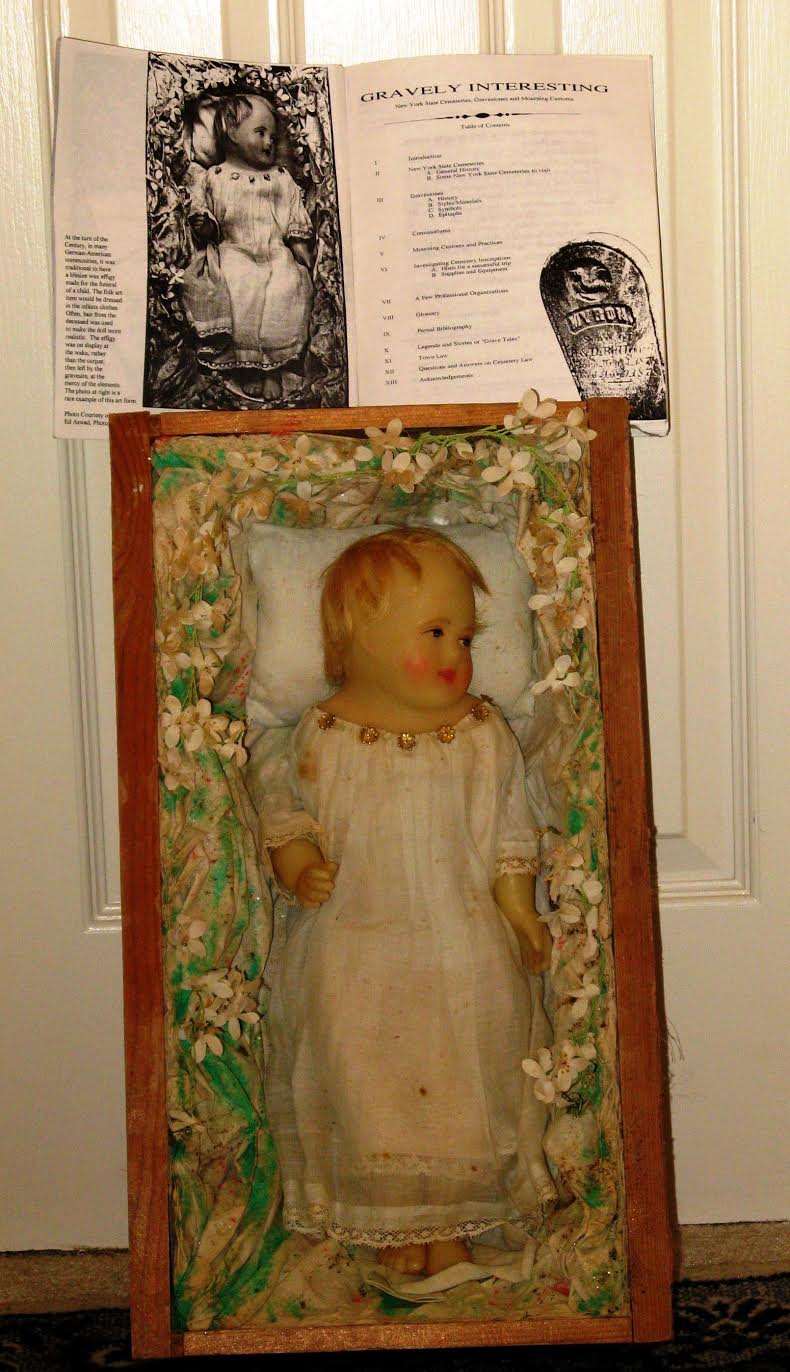 If you were a girl-child during the Victorian era, you probably had a doll.
If you were a girl-child during the Victorian era, you probably had a doll.
With a sweet, cherubic face that doll was seen not only as the reinforcement of innocence, but also a model in which to practice social interactions and gender norms. While childhood in the late 19th century was seen as a time for play, that play also came with instruction.
Through tending to their dolls, girls were taught tho sew, knit, and fashion clothing. They play-acted tea parties and courtships, and learned the expectations and rules of femininity. Of course they were encouraged to dote on babydolls like they were their own; preparing girls for life as a good wife and mother.
But there was another role that dolls prepared girls for: funerals.
Young girls were given “death kits”, everything a future-woman might need to practice executing a wake and funeral.
A kit would include a doll with black mourning clothes and a doll-sized coffin. The girl would then practice dressing the doll, laying it out for visitation, placing it in the coffin, and facilitating a funeral. She might also be expected to practice attending to the grief of the doll’s mourners.
Now a-days this might seem like a lot to ask of a young girl, but in the Victorian era up until the mid-20th century there was a high likelihood that a woman would be called upon to care for the dead. That’s what women did.
So that’s what girls did. They did tea-parties and death rituals.
So not much has changed.
But dolls were more than Little Suzy’s Funeral Friends™, for many they were a part of the grieving process.
When a child or infant died, if a family could afford it they might have a realistic wax doll created in the likeness of their child. Dressed in the child’s clothing and often adorned with locks of the dead child’s hair, the effigy would depict the child as peacefully sleeping.
The doll would be prepared for the wake and funeral, being displayed for mourners near the body of the child. Sometimes the effigy would be a full bodied doll, its body weighted with sand so as to feel more realistic, and with a flat back so as to lie down nicely in something like a tiny coffin. Dolls of older children might just be a head and shoulders, with the back of the head and torso flattened so it could be framed.
After the funeral the doll would either be left at the child’s grave or kept in the home, perhaps displayed in a glass coffin. Often cared for much like a real child, the mourning doll might be placed in a bed or crib and have its clothes regularly changed.
Resources
“Wax Dolls, Montanari and Pierotti Dolls – Gotta Love The Beauty of Wax” “The Lovely and Disturbing: The History of Wax Dolls” “The History of Creepy Dolls” “Encyclopedia of Children and Childhood in History and Society”